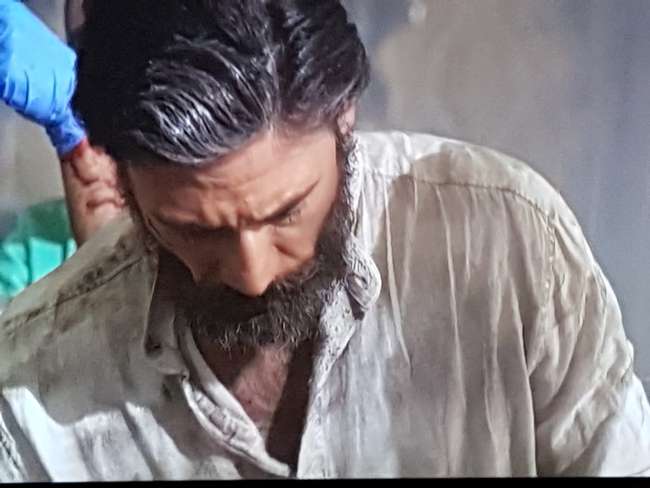Don Curry and the Camel Knight Castle
प्रकाशित: 13.01.2017
समाचार पत्रिका के लिए सदस्यता लें
Don Curry chuckled to himself. He did it knowingly, not following any form of amusement. That's exactly how he had imagined it: India was completely different beyond Delhi. Beyond Delhi, one could safely discard all the usual stereotypes. Beyond Delhi - India was even more different...
After a hearty breakfast buffet, where Don Curry conventionally stuck to cereal and a bit of papaya, it was time to leave the suite. Mr. Sanjay was already waiting and eagerly honked his way through the streets of Delhi.
The first destination was the Lakshmi Narayan Temple, where Mr. Brahm was already waiting to showcase his special knowledge. He actually worked as a history teacher, supplementing his meager government salary by working as a tourist guide; and he was currently writing a book on Indian temple architecture.
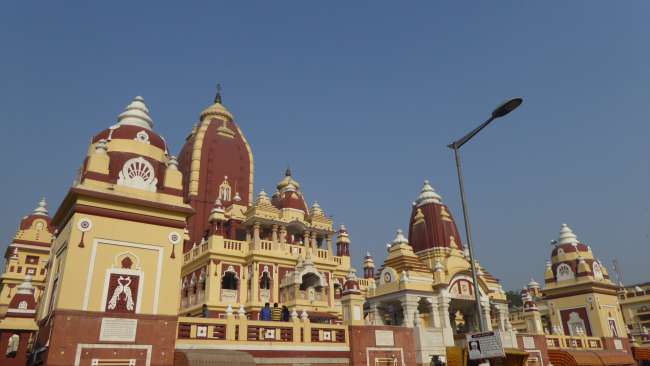
Don Curry was filled with an abundance of knowledge about the typical structure of Hindu temples, the difference between sculptures and icons in Hinduism, and countless stories about the complex relationships among the gods. In addition, Mr. Brahm marked him with a 'prayer dot' between the eyebrows, indicating that he had been to a temple. The whole world should know...
Mr. Brahm referred to the playful and light architecture of the Lakshmi Narayan Temple with its wonderful yellow-orange color scheme as a 'trailer', a small advertisement for the actual 'movie'. This 'movie' was the gigantic Akshardham Temple, which a Hindu sect built in 2005, and which has since surpassed Angkor Wat as the largest temple in the world.
The silhouettes of the various temple buildings stood out monstrously from afar, but the security measures were also monstrous. Only clothing and wallets were allowed on the temple premises, everything else was locked away. The subsequent security check turned out to be more intense and strict than at some airports, and everything was geared towards handling large crowds: around 20,000 people visited the temple daily. Since Don Curry was here shortly after opening, the number of attendees was still quite small. The huge main temple, with a mixture of Hindu and Mughal styles, was adorned inside and out with meticulous and elaborate decorations. However, all of this seemed deliberate to Don Curry, as if Ludwig II of Bavaria had had a hand in it, or worse: somehow the whole area had an aura of Disneyland with a Hindu twist, for example, there was a boat ride through Indian history, huge souvenir shops, and other 'attractions'.
The pedestal of the temple is a massive 360-meter-long frieze, which aims to show people how to live properly through life-size elephant sculptures: communally, patiently, protectively, and caring... Elephants are simply better humans, according to the Hindu belief.
For Mr. Brahm, this temple was obviously the highlight of the Delhi visit, but for Don Curry, it was only the final point. Gratefully, he bid farewell to his guide, and now he was ready to venture into the vastness of India with Mr. Sanjay.
After the usual struggle through Delhi's streets and suburbs, the difference to the countryside became apparent quite soon. Delhi had been mostly clean, but the surroundings were not. A sense of aesthetics and cleanliness beyond one's own privacy had not yet developed in the harsh everyday life of most people. Especially the smaller cities and towns were overflowing with garbage and debris along the roads. Dogs, cats, and the first cows eagerly searched through the corresponding piles for something to eat. Black and pink pigs with cute punk hairstyles also appeared frequently along the roadside, as well as goats, zebras, buffaloes, donkeys, and occasionally horses. And when camels, monkeys, and even peacocks lined the road, Don Curry almost felt like he was in a safari park. During lunch in a small garden restaurant, chipmunks and parrots shared the garden with him. Only the endless blooming rapeseed fields brought a touch of familiar color to the exotic environment.
The road conditions varied greatly: sometimes it went quite smoothly, of course with the typical jostling, honking, and counter-honking, but sometimes there was also considerable shaking and rattling involved.
Right on time for the evening prayer, Don Curry arrived at the Rani Sati Temple in Jhunjhunu, the gateway to the Shekhawati region. In the light of the full moon and with colorful lighting, the Hindu temple, which was also architecturally impressive, exuded a very special atmosphere. The 'prayer dot' was well-deserved today, thought Don Curry.
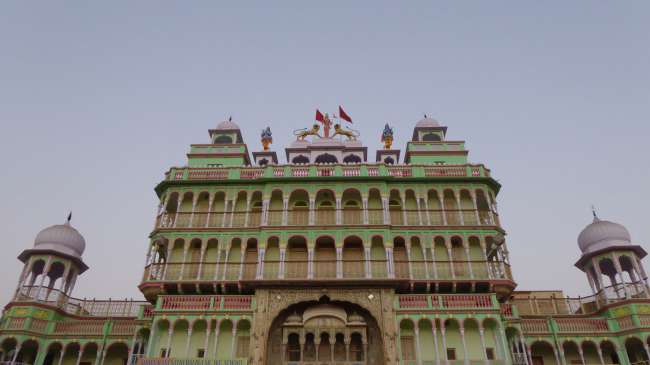
After a few more kilometers, they finally reached Mandawa, where a sturdy medieval castle rose in the center, which had been partially converted into a hotel for some time. However, knights on spirited horses had never moved here, this area on the edge of the Thar Desert had been camel country since ancient times. Don Curry was assigned a room on the third level, which could only be reached through a bewildering series of stairs, corridors, and terraces. The mirrors at the head and foot of the bed were also confusing: this was the first time Don Curry could watch himself sleep. Even the style of the dinner was confusing. Don Curry couldn't choose, after the soup, a plate with chicken, rice, vegetables, and pasta was simply served to him. Once he had eaten some of it, the enthusiastic staff immediately filled the plate with Indian spinach and paneer cheese. Then, 4 waiters appeared one after the other, offering him seconds of each dish, until Don Curry finally gave up, more than satisfied.
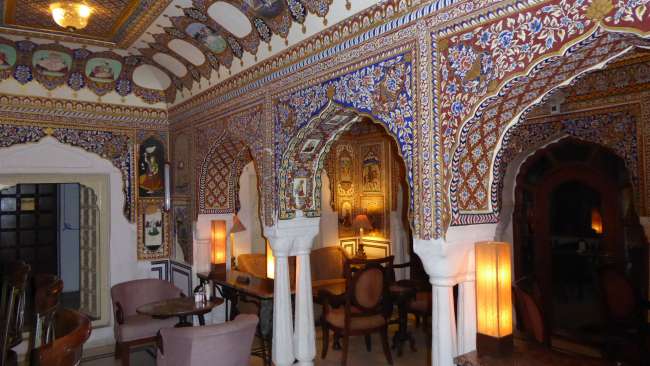
The most beautiful room in the castle had been converted into a bar: complete with colorful wall and ceiling paintings from the 19th century. Don Curry indulged in the colorful spectacle with a domestic gin, which, however, fell far short of the visual impressions. On the way home through the various courtyards and terraces of the castle, hundreds of lights and spotlights illuminated the surroundings. India was truly different, time and time again...
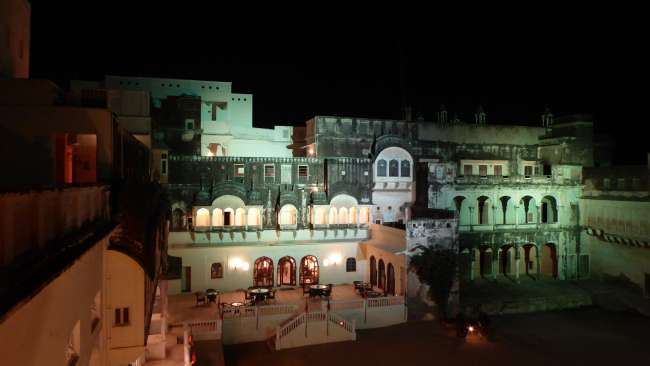
समाचार पत्रिका के लिए सदस्यता लें
उत्तर
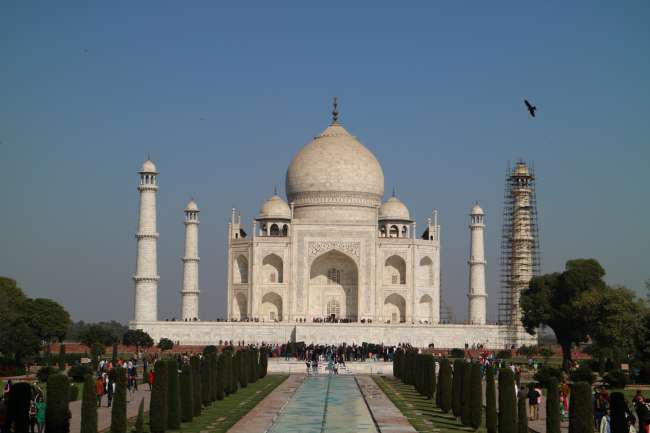
यात्रा रिपोर्ट भारत

